Composters
ComposTumbler
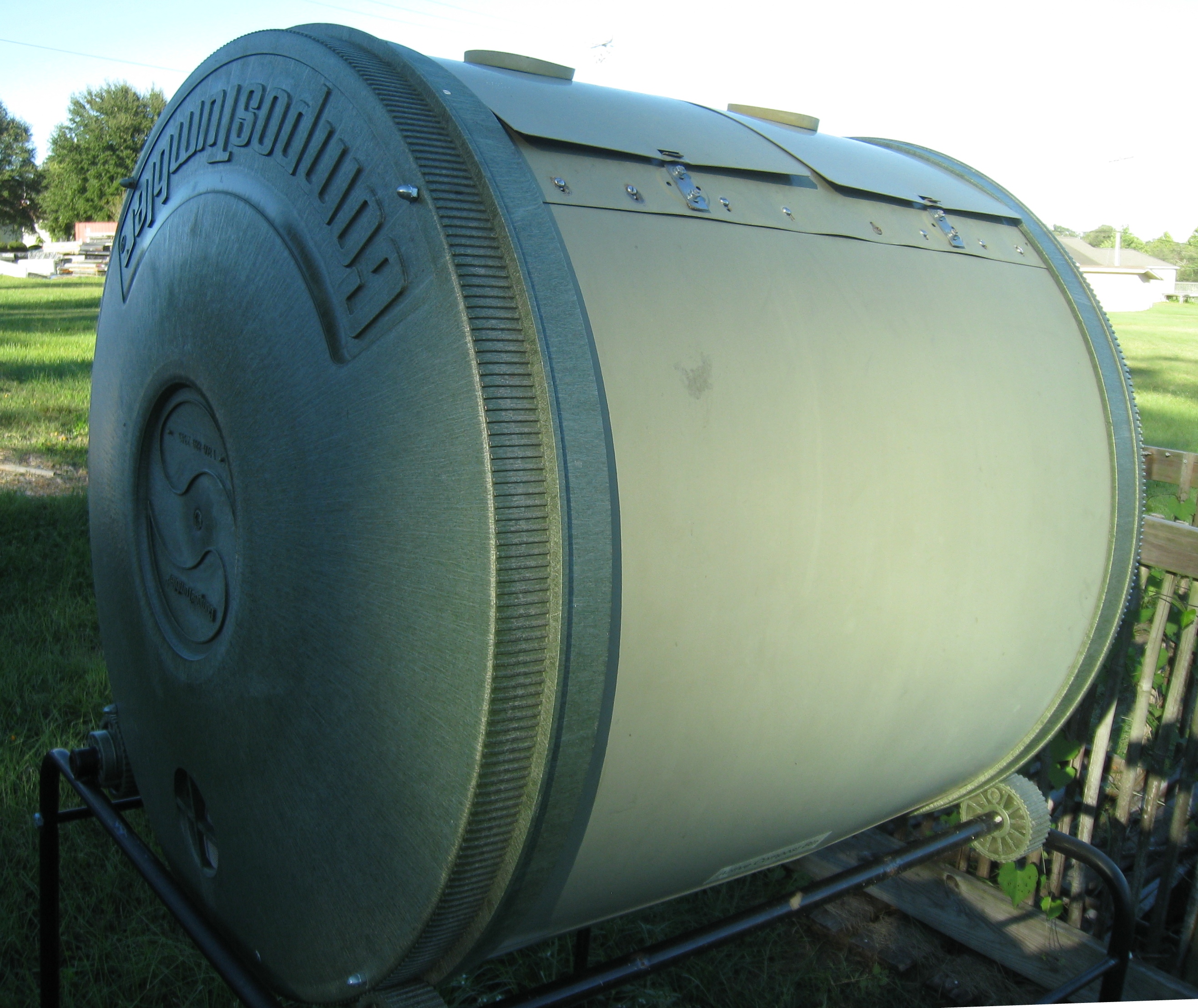
This type of composter is designed for easy manual mixing. We have two ComposTumblers at the SCC. The small CompoTumbler is turned using grips on the barrel. The large ComposTumbler is turned using a geared handle. The composters are raised above the ground to prevent potential vermin. A door on the side of the digester allows easy access to place in material and remove compost. The large ComposTumbler consists of two separate chambers so composting can occur in phases. Vents at the top and bottom allow air flow through the compost.
Earth Machine
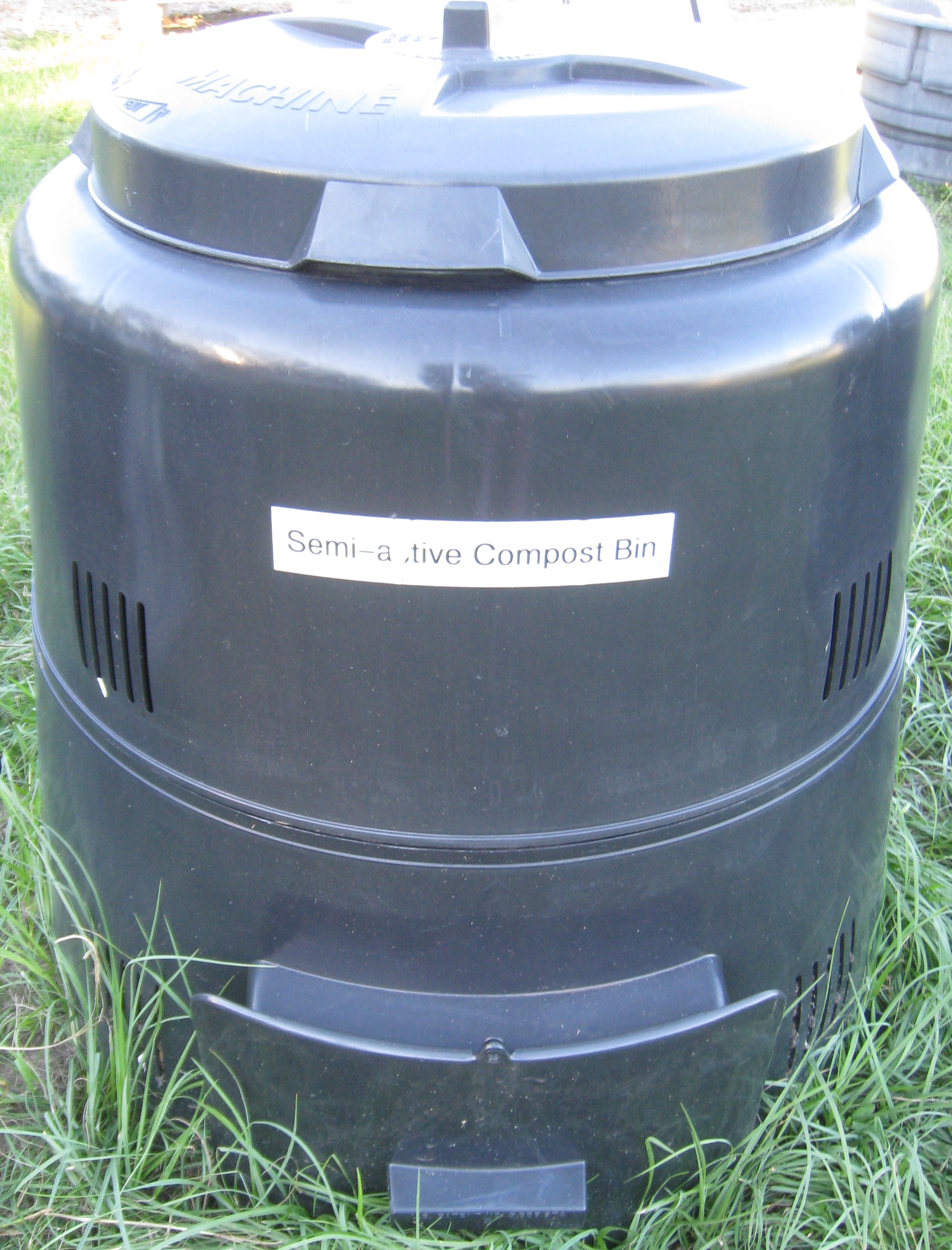
We have four Earth Machines at the SCC. This common backyard composter is a simple design that is essentially a vented barrel with a removable lid and door at the bottom through which compost is removed. A turning fork can be used to mix the compost through the top opening. The black color facilitates absorption of sunlight to increase compost temperatures in winter months.
Soilsaver Classic Composter
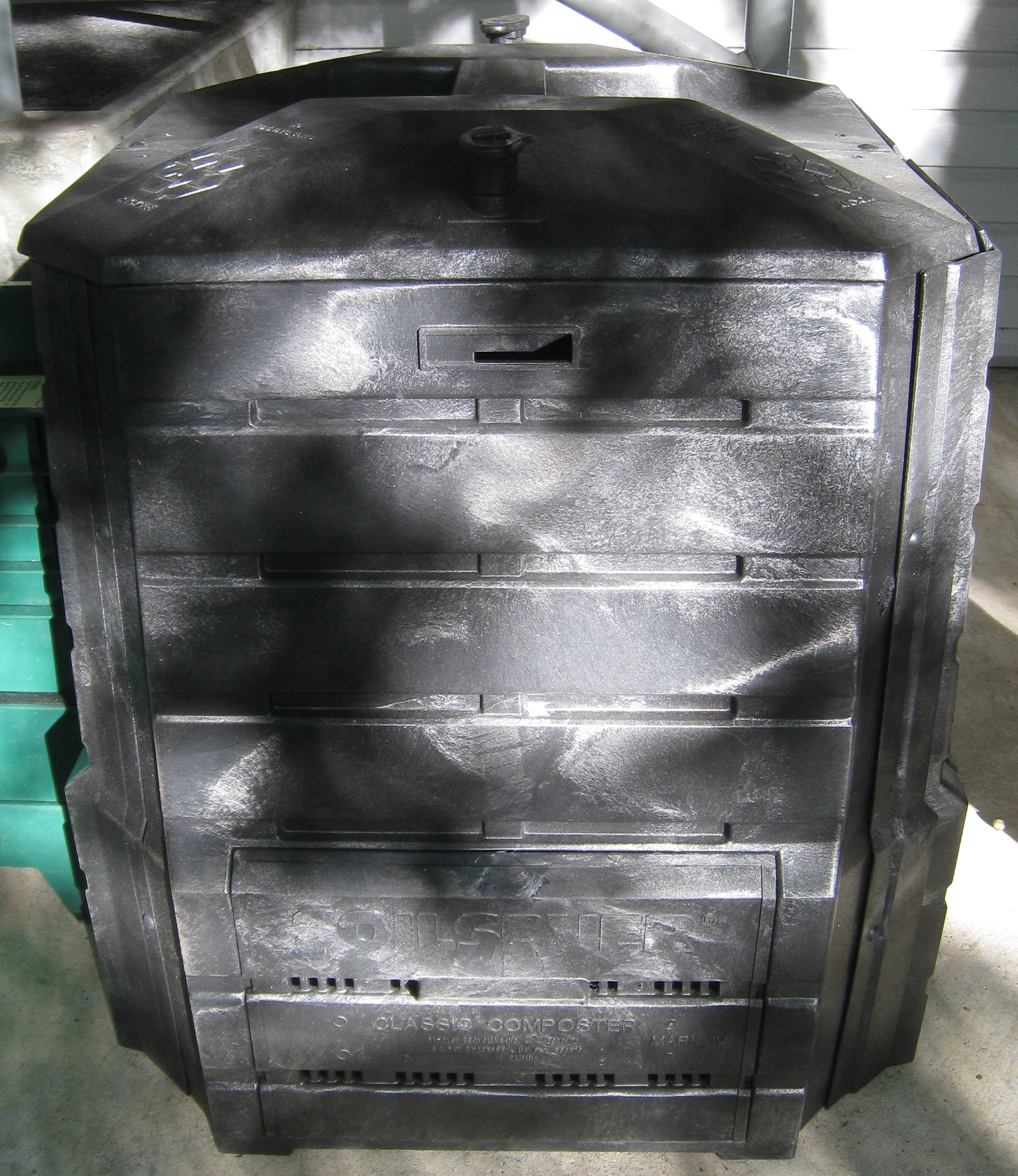
This composter is similar in principle to the Earth Machine, but square in shape. It also has two doors on the bottom to allow removal of compost from both sides of the composter.
Bamboo Composter
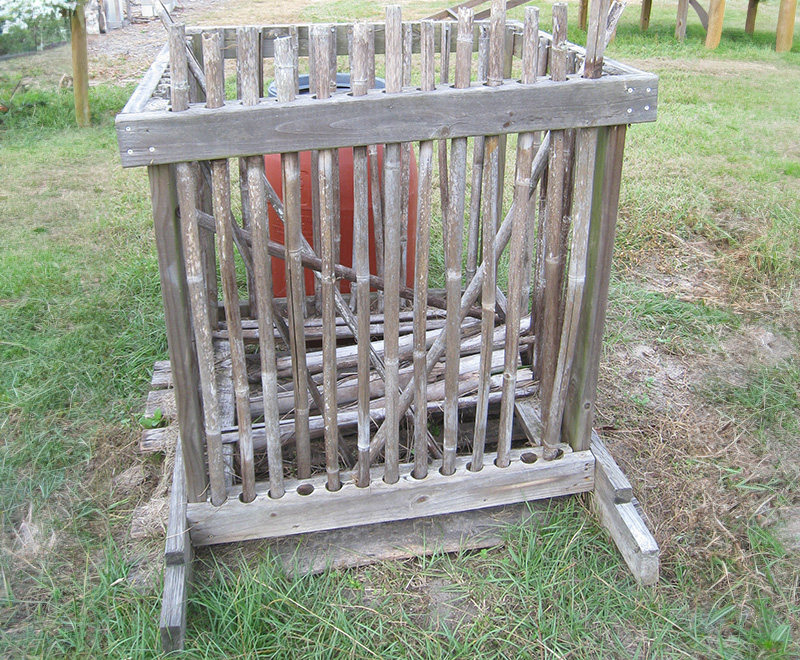
An effective composter does not have to be purchased. Our homemade composter is made from 2x4’s and local bamboo. When designing your own digester it is important to keep some things in mind: 1) ventilation to allow the compost to breath, 2) ease of loading material in the composter, 3) easy access for mixing, and 4) a way of removing the compost. A homemade composter is great way of becoming more involved with composting, and to have a composter that is ideal for your situation.
Open Pile
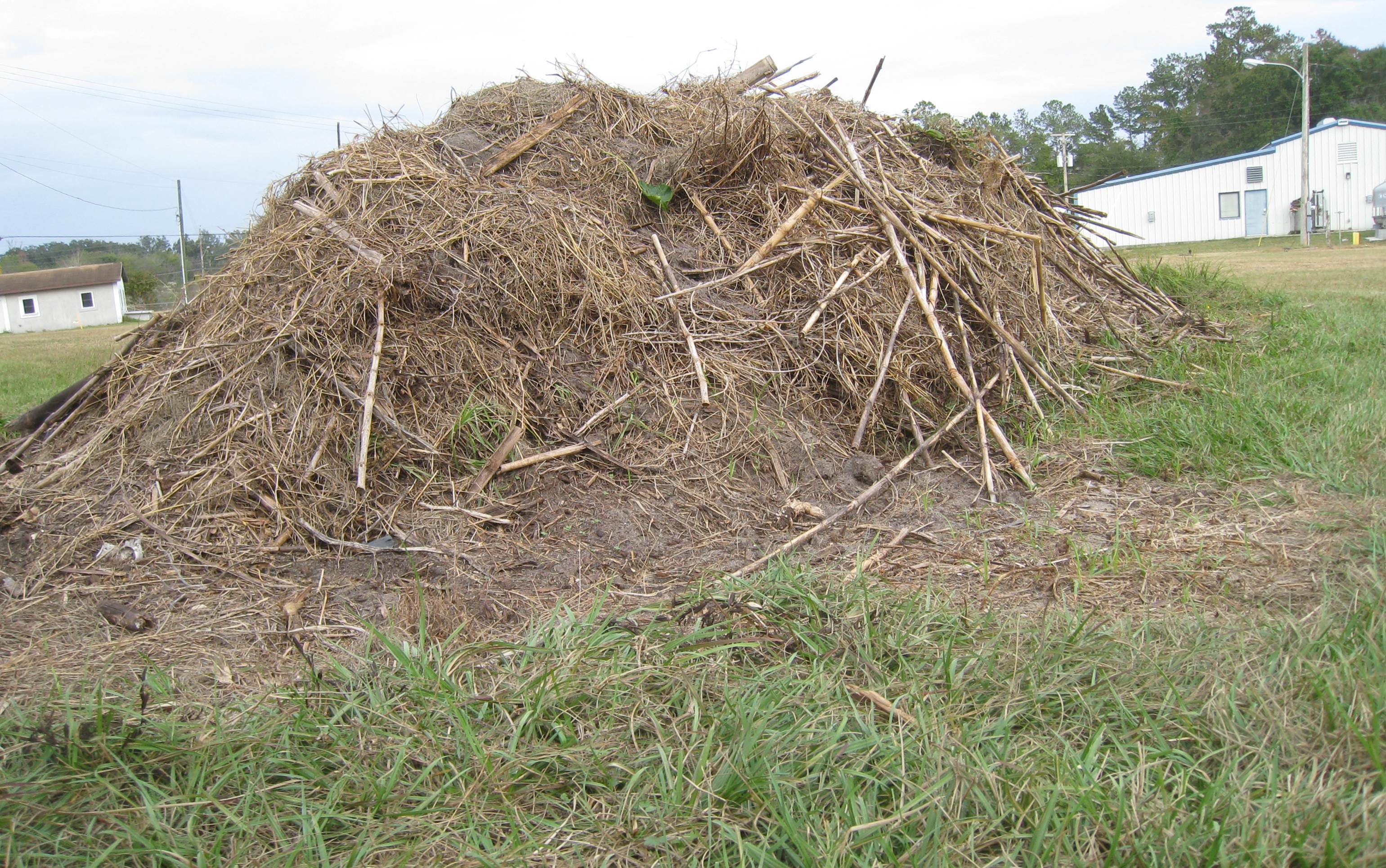
An open pile is the most basic form of composting. Material is essentially placed into a pile and allowed to biodegrade. Although simple in design, an open pile can be very effective. When using on open pile, it is important to layer the compost. Stack material alternating between a layer of “browns” and a layer of “greens”. This gives the microorganisms better access to both types of organic material. Once the composting process has started, mixing is important for speedy and thorough composting of all material. Open piles are also ideal for larger material or a high volume of material that cannot fit in a composter.

